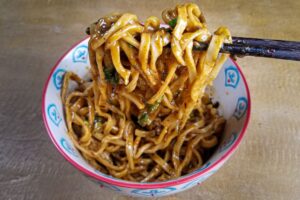Dan Dan Noodles
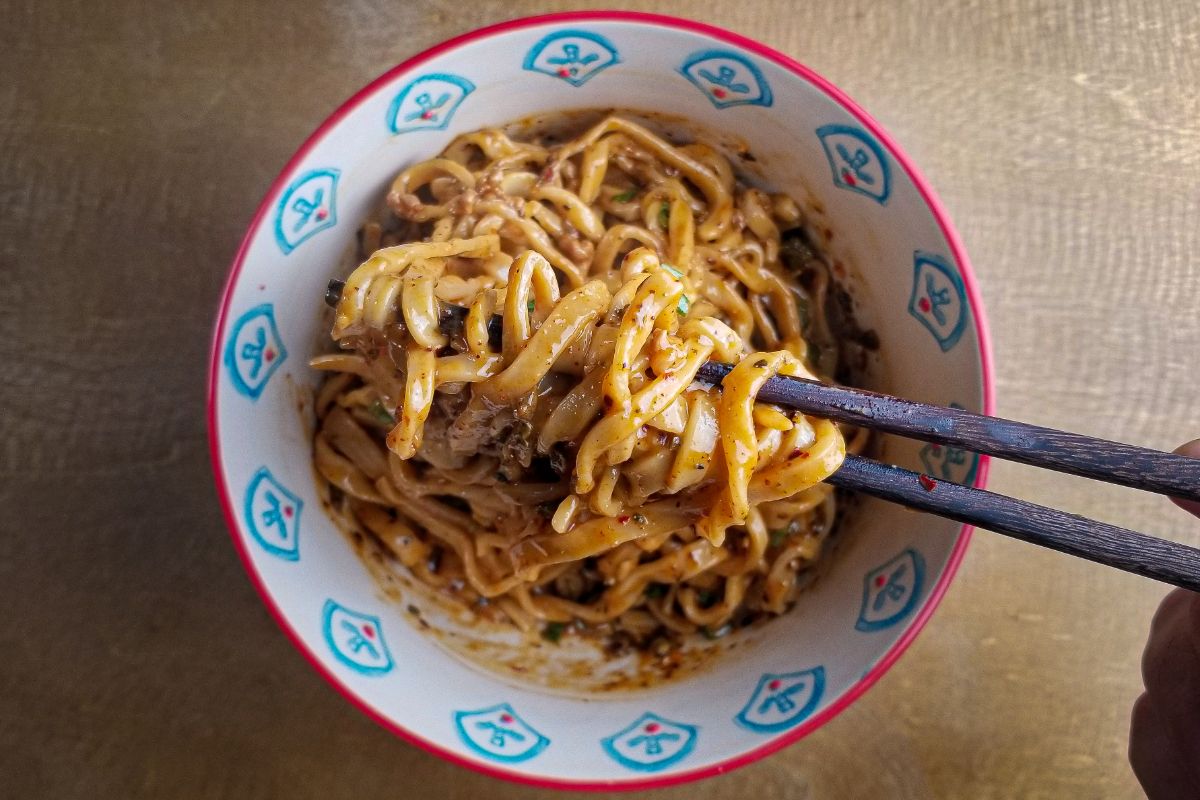
Let me preface this by saying that I am by no means an expert on this dish, I just love eating Dan Dan noodles and this recipe is about as close as I can get to what I consider “ideal”. I have eaten countless bowls of Dan Dan here in the US but my definition of “ideal” was really solidified when I visited Chengdu, Sichuan.
The Dan Dan noodles I ate in Chengdu were quite different from the versions I have had here. First of all, the noodles in Chengdu were much better. They were thick, tasted of wheat, and had a pleasantly chewy texture. Many of the versions here in the US are made with overcooked, flavorless noodles. The Dan Dan sauce in Chengdu was also much better. It was savory, spicy, and coated the noodles well. The chili oil would emulsify into the sauce which gave the noodles a creamy texture, never oily or greasy.

Making Dan Dan at home requires making three “main” components separately. Once you have made these components, the bowls of noodles can be assembled. The three components are the noodles, the chili oil, and the topping. The nice thing is, you can buy two of these items (noodles and chili oil) from most Chinese/Asian grocery stores and still yield decent results.
The noodles
Using high-quality noodles is very important to a bowl of Dan Dan. I think the best way to ensure great results is to make them yourself. The recipe for hand-cut alkaline noodles is linked here. Alternatively, you could purchase fresh noodles from an Asian grocery store. I prefer slightly thicker wheat noodles for this dish (2 mm or 1/8th inch thick).
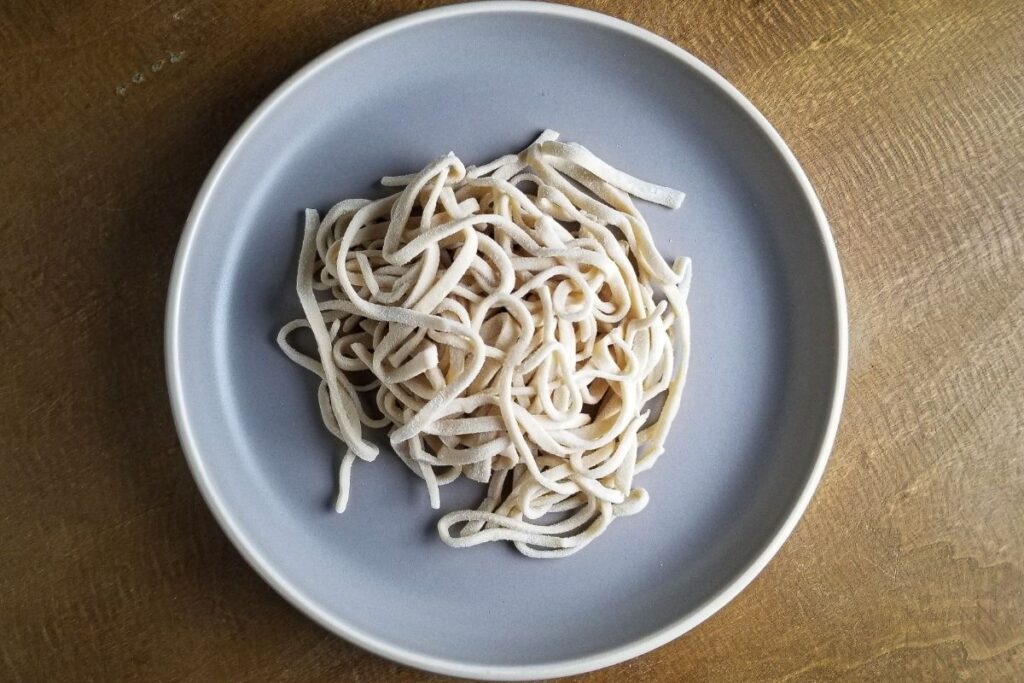
The chili oil
Good chili oil is essential to making a bowl of Dan Dan noodles. I like to make chili oil at home because I can adjust it to my liking and it often tastes better than the store-bought stuff. That being said, if you have a well-stocked Chinese grocery store near you, there are some high-quality Sichuan chili oils you can buy. You can find the chili oil recipe here.
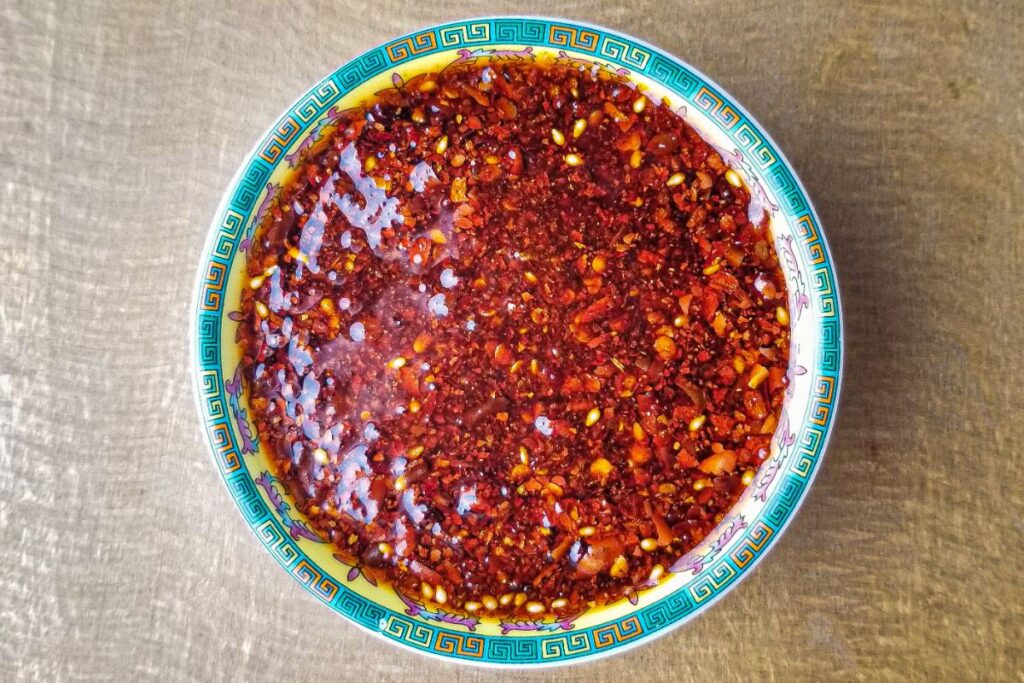
The pork topping
This is the one component that you will need to make yourself. Luckily it is quite easy to make as long as you have the right ingredients. The topping is a mixture of ground pork, suimiyacai (fermented mustard greens), and snake beans that are quickly stir-fried together. The suimiyacai brings a salty, umami, fermented quality to the dish. It can be purchased on Amazon or in many Asian Grocery stores. Snake beans are often served in Dan Dan-style noodles in Chengdu so I added them to this recipe. I prefer snake beans to the more typical blanched bok choy/spinach. The topping can be made a few hours ahead of time and held at room temperature until you are ready to assemble your bowls of noodles
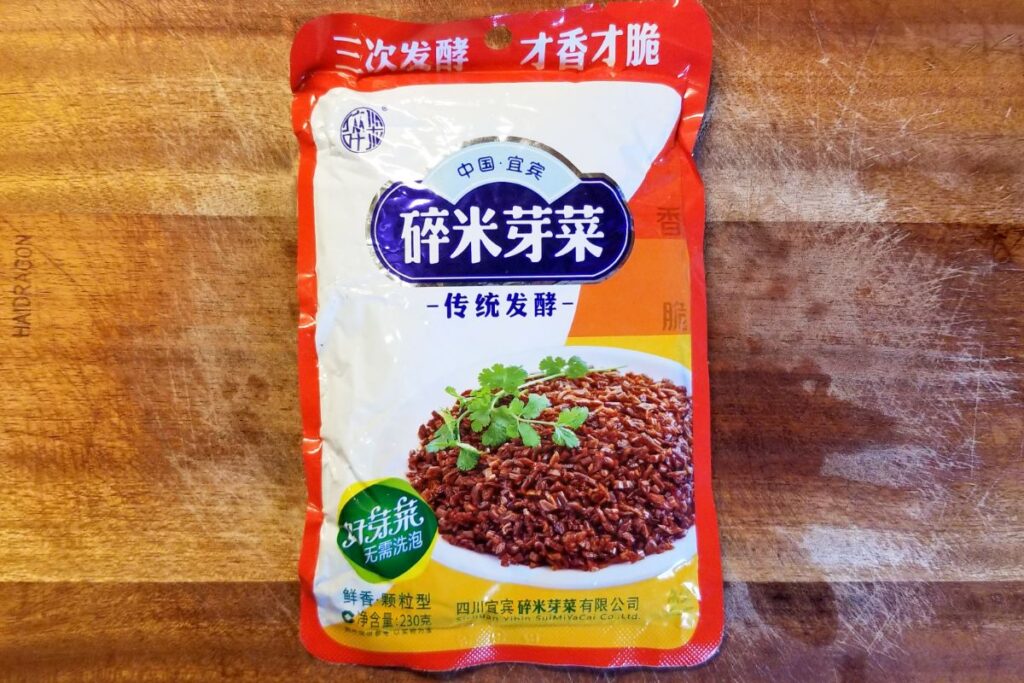
Final Assembly
Once you have made the three main components, assembling the bowls is very simple. The chili oil is placed in the bottom of a bowl along with some sliced scallions and a few other pantry items. This will become the “sauce” for the noodles. The noodles are then cooked, placed on top of the “sauce” and finished with a little bit of the pork topping. Make sure to mix your bowl of noodles well before eating!
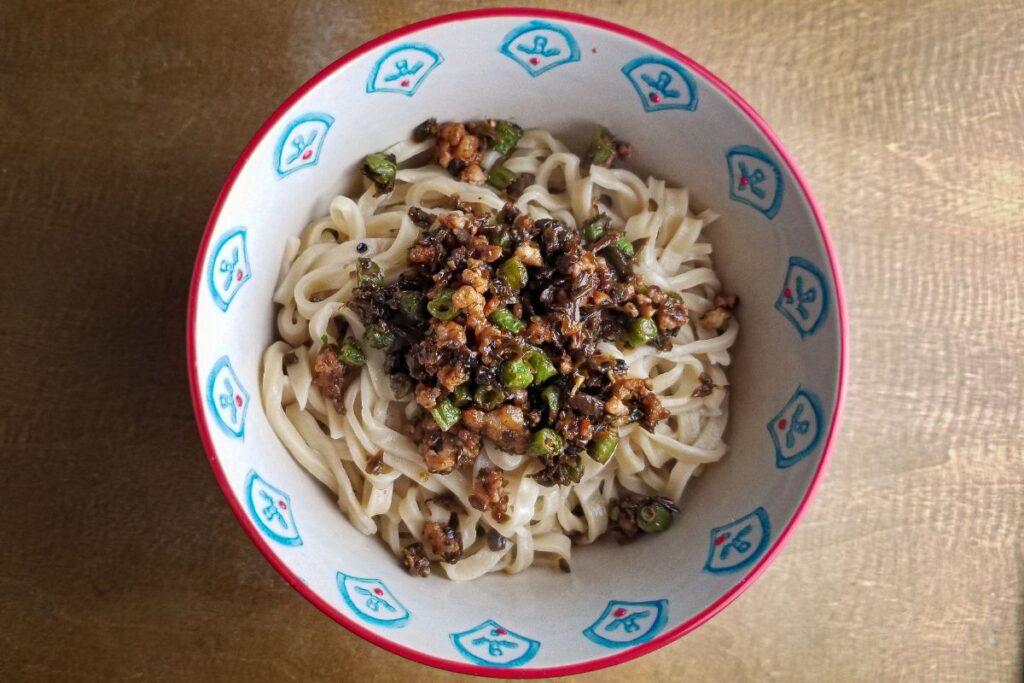
Necessary for this recipe:

Dan Dan Noodles
Ingredients
Pork topping (enough for 2 bowls of noodles)
- 1 Tbsp rendered lard
- 70 grams snake beans, sliced into 1/4 inch rounds (1/2 cup sliced beans)
- 1 medium clove garlic, chopped
- 75 grams ground pork ( 1/4 cup)
- 1/2 Tbsp Shoaxing wine (optional)
- 1 Tbsp tian mian jiang AKA sweet wheat paste (can be substituted with hoisin sauce)
- 1/4 tsp salt
- 1/4 tsp sugar
- 1/2 tsp soy sauce
- 35 grams suimiyacai (preserved mustard greens) (1/4 cup)
Sauce (per bowl)
- 1/4 cup thinly sliced scallion
- 2 tsp rendered pork lard
- 2 Tbsp Sichuan chili oil, with sediment (recipe linked above)
- 1 Tbsp soy sauce
- 1 Tbsp. Chinkiang vinegar
- 1/2 tsp toasted, ground sichuan peppercorn
- 1.5 Tbsp Tahini
- 2 tsp sugar
- 1/2 tsp MSG (optional but recommended)
Final assembly (per bowl)
- 200 grams hand-cut alkaline noodles or store bought fresh wheat noodles (recipe linked above yields 400 grams of noodles, 2 bowls worth)
- 1 Tbsp starchy noodle cooking water (obtained after cooking the noodles)
- 3-4 Tbsp Pork topping
Instructions
Pork/snake bean topping
- Melt 1 Tbsp lard in a saute pan over medium-high heat.
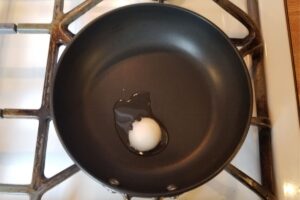
- Add the sliced snake beans and chopped garlic and cook for 30 seconds over medium-high heat.
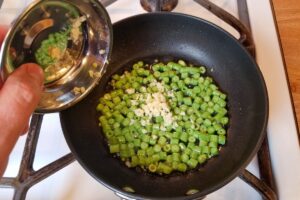
- Add the ground pork and start to cook while breaking it up with a spoon. Cook for a minute or two; until the pork is cooked through.
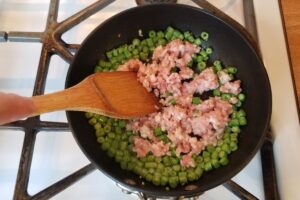
- Add the Shaoxing wine, followed by the tian mian jiang, salt, sugar, and soy sauce. Stir and cook for 30 seconds.
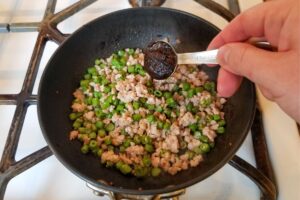
- Add the suimiyacai and cook everything together for 1 more minute.
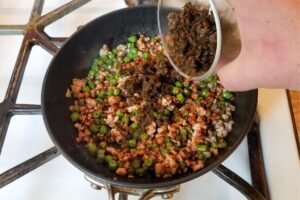
- Place the pork topping in a small bowl, and keep covered, at room temperature until ready to use, 3 hours max.
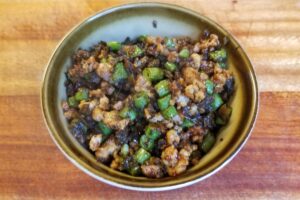
Sauce and assembly
- Bring approximately 3 quarts/liters of water to a boil. Do not salt the water.
- Place all of the sauce ingredients in the bottom of two bowls. Remember that the ingredients listed above are for EACH bowl of noodles.
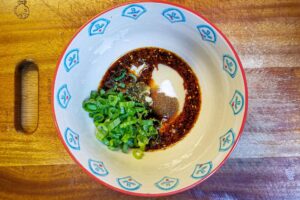
- Boil 200 grams of noodles for about 2-3 minutes.
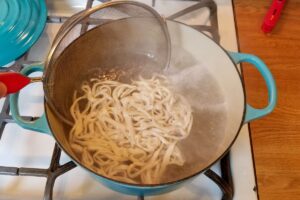
- Remove the noodles from the pot using a mesh strainer, shake off all of the excess water and place the cooked noodles into one of your bowls.
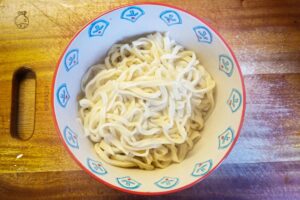
- Top the noodles with 1 Tbsp of the noodle cooking water and 3-4 Tbsp of the pork topping (half of the topping you made).
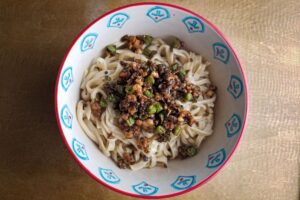
- Cook the other 200 grams of noodles and finish the 2nd bowl in the same way.
- Serve and make sure you mix the noodles well before eating!
